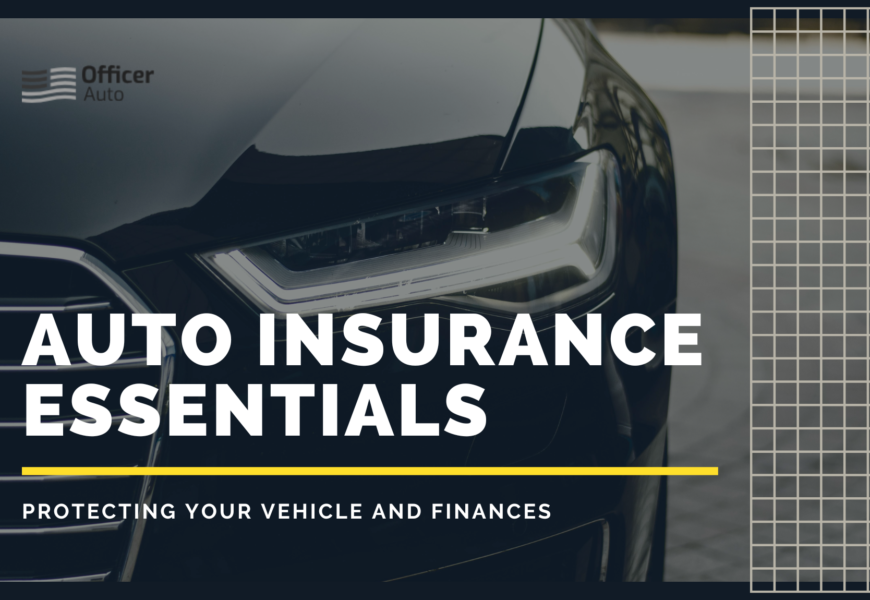Auto insurance is a crucial aspect of vehicle ownership, providing financial protection against various risks associated with driving. Understanding the fundamentals of auto insurance helps ensure that you are adequately covered while potentially saving on premiums. This article delves into the essentials of auto insurance, offering insights into types of coverage, factors affecting premiums, and tips for optimizing your policy.
Types of Auto Insurance Coverage
Auto insurance policies typically comprise several types of coverage, each addressing different risks:
1. Liability Coverage
Liability coverage is mandatory in most states. It covers bodily injury and property damage that you cause to others in an accident. There are two main components:
- Bodily Injury Liability (BIL): Covers medical expenses, lost wages, and legal fees if you are responsible for an accident that injures someone else.
- Property Damage Liability (PDL): Pays for damages to another person’s property, such as their vehicle, fence, or building.
2. Collision Coverage
Collision coverage pays for repairs or replacement of your vehicle if it is damaged in an accident, regardless of who is at fault. This is particularly important for newer or more expensive vehicles.
3. Comprehensive Coverage
Comprehensive coverage protects against non-collision-related incidents, such as theft, vandalism, natural disasters, and animal strikes. It ensures you are covered for a wide range of potential damages.
4. Uninsured/Underinsured Motorist Coverage
This coverage is essential if you are involved in an accident with a driver who either lacks sufficient insurance or has no insurance at all. It covers medical expenses and, in some cases, property damage.
5. Personal Injury Protection (PIP)
PIP, also known as no-fault insurance, covers medical expenses, lost wages, and other related costs, regardless of who is at fault in an accident. It is mandatory in some states and optional in others.
6. Medical Payments Coverage (MedPay)
Similar to PIP, MedPay covers medical expenses for you and your passengers after an accident, irrespective of fault. It is generally a supplemental coverage to health insurance.
Factors Affecting Auto Insurance Premiums
Several factors influence the cost of your auto insurance premiums:
1. Driving Record
A clean driving record with no accidents or traffic violations typically results in lower premiums, as insurers consider you a lower risk.
2. Vehicle Type
The make, model, and year of your vehicle affect your premium. Luxury cars, sports cars, and models with high repair costs generally attract higher premiums.
3. Coverage Levels
The extent and types of coverage you choose directly impact your premiums. Higher coverage limits and lower deductibles increase your costs but provide better protection.
4. Location
Where you live affects your insurance rates. Urban areas with higher traffic density and crime rates usually have higher premiums compared to rural areas.
5. Credit Score
In many states, insurers use credit scores to help determine premiums. A higher credit score can lead to lower rates, as it is often associated with more responsible behavior.
6. Mileage
The more you drive, the higher your risk of being in an accident. Therefore, higher annual mileage can lead to higher premiums.
Tips for Optimizing Your Auto Insurance Policy
1. Shop Around
Compare quotes from multiple insurers to find the best coverage at the most competitive price. Each insurer uses different criteria to calculate premiums, so shopping around can yield significant savings.
2. Bundle Policies
Many insurers offer discounts if you purchase multiple types of insurance (e.g., auto and home) from them. Bundling can simplify your insurance management and reduce costs.
3. Maintain a Good Credit Score
Since credit scores can influence premiums, maintaining a good credit score can help you secure lower rates.
4. Increase Your Deductible
Opting for a higher deductible can reduce your premium. Ensure that you have enough savings to cover the deductible in case of a claim.
5. Take Advantage of Discounts
Inquire about available discounts, such as those for safe driving, completing a defensive driving course, being a good student, or having certain safety features in your vehicle.
6. Review and Update Your Policy Regularly
Life changes, such as moving, buying a new car, or getting married, can impact your insurance needs and rates. Regularly reviewing your policy ensures it remains aligned with your current situation.
Conclusion
Auto insurance is an essential component of responsible vehicle ownership, providing vital financial protection against accidents and other risks. By understanding the different types of coverage, factors affecting premiums, and strategies for optimizing your policy, you can ensure that you are adequately protected while managing your insurance costs effectively. Regularly reviewing your coverage and staying informed about insurance options will help you make the best decisions for your vehicle and financial well-being.












